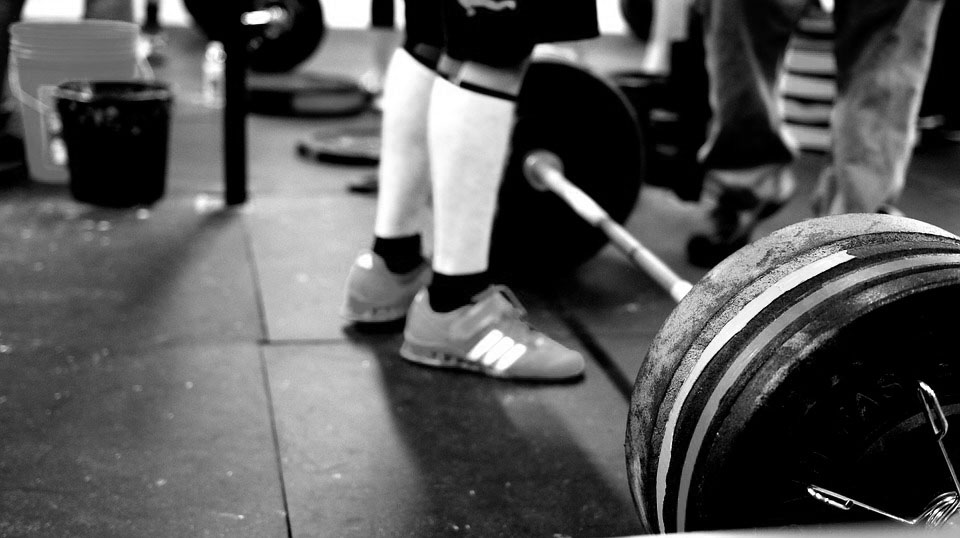Before you read this article, check out the other in the Performance Testing series, including Part 1: The Fundamentals of Testing; Part 2: Psychological tests, Part 3: Flexibility; and Part 4: Body size and composition
MMA is a sport made up of explosive offensive and defensive techniques, many of which require a high degree of muscular power. There are many different ways to assess muscular power, but the best way is to use a piece of scientific equipment called an isokinetic dynamometer. If you don’t have access to one, we’re going to cover two simple tests that you can use. The first test assesses the power of your lower body muscles using a vertical jumping protocol. The second assesses upper body muscular power using a seated medicine ball toss. Both tests are covered below.
For the vertical jump test you will need a measuring tape, chalk or a marker, and a scale to measure body mass. First, the starting reaching height is recorded (shown in figure below). This is just the distance between the floor and the fingertip of an outstretched arm measured when the participant is standing next to a wall. The ending fingertip position will be identified on the wall by the chalk dust/tape (or other mark) left by the participant’s fingertip at the top of their jump (show in figure). Your vertical jump height is simply calculated by finding the difference between the maximum jump height (cm) the standing reach (cm).
Without a preparatory step or a counter-movement, the participant will stand with their feet shoulder width apart and perform a vertical jump by squatting down until the knees are bent to 90°, holding for a count of 3 seconds, and jumping as quickly and as powerfully as possible, with the goal of jumping as high as possible.

During the jump, the dominant arm should reach upward in an attempt to touch the highest point possible. A total of 3 attempts should be made, each separated by 30 s of rest.
Although recording the height of the jump is a pretty good measure of lower body power, you can also calculate the peak power of the vertical jump using a formula developed by Sayers et al., (1999);
Peak power (watts) = [60.7 x VJ height (cm)] + [45.3 x body mass (kg)] – 2055
Example calculation
Peak power (watts) = [60.7 x 50 cm] + [45.3 x 75 kg] – 2055
Peak power (watts) = [3035] + [3397.5] – 2055
Peak power (watts) = [6432.6] – 2055
Peak power (watts) = 4377.5 W
For the seated medicine ball throw, you’ll need a medicine ball with a set weight (i.e. 5kg). In this test The participant should sit down on the floor against a wall. They should be sat on and centred over a tape measure that touches the wall behind them. The tape measure should be centred between the feet, buttocks, and the upper part of the back and head. Participants should sit with their feet (at least heels) pressed on in floor.

Participants are to hold the medicine ball with both hands in front of the chest, fingers behind the ball, and elbows slightly raised (45°), then throw the ball forward as far as possible. During the initiation of the throw the head and back should not lose contact with the wall, and no rocking before the throw is allowed. Perform two attempts separated by 30s rest and document the throw distance up to 1 cm.
Download the MMA Training Bible’s data collection book here. This will allow you to record your data and chart your progress on this test and all of the other tests described in this article series.
That’s it for this article, watch out for the next one on Muscular strength Testing.
Take Care,
Dr. Gillis
References

Leave a Reply